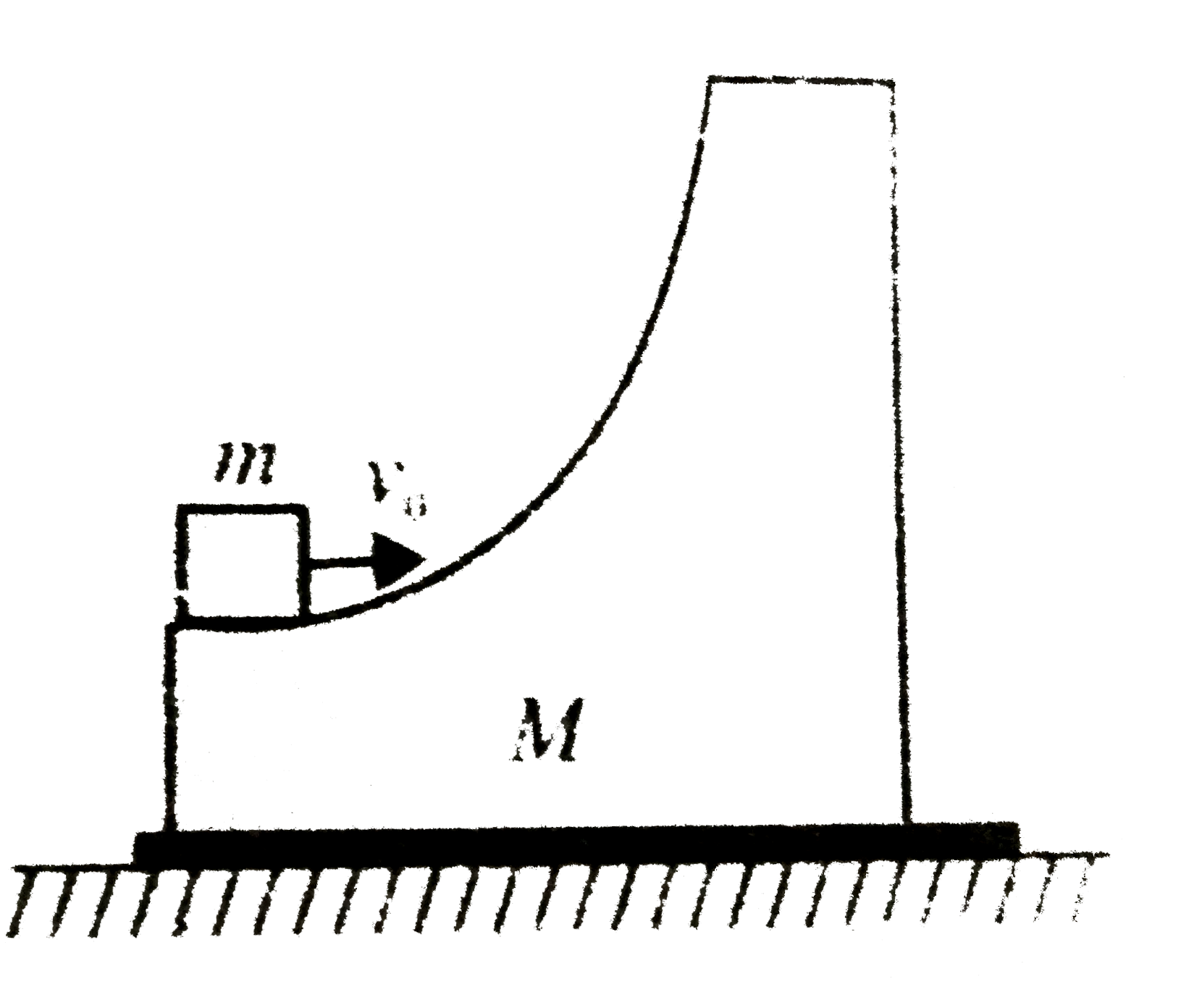In the figure shown, a ring A is initially rolling without sliding with a velocity v, on the horizontal surface of the body B (of same mass as A). All surfaces arc smooth. B has no initial velocity. What will be the maximum height reached by A on B?

3v24g
v24g
v22g
v23g
The correct Answer is:B
When the ring is at the maximum height, the wedge and the ring have the same horizontal component of velocity. As all the surfaces are as smooth, in the sabsence of friction between the ring and the wedge surface, angular velocity of the ring remains constant.
For conservatioin of mehanical energy we get
12mv2+12Iω2=12mv′(2)+12Iω2+12mv'2+mgh
Where v' is final common velocity
v'=v2 (from, conservation of momentum) and h=v24g
Topper's Solved these Questions
- RIGID BODY DYNAMICS 2BOOK - CENGAGE PHYSICSCHAPTER - RIGID BODY DYNAMICS 2EXERCISE - Multiple Correct
26 Videos
- RIGID BODY DYNAMICS 2BOOK - CENGAGE PHYSICSCHAPTER - RIGID BODY DYNAMICS 2EXERCISE - Linked Comprehension
71 Videos
- RIGID BODY DYNAMICS 2BOOK - CENGAGE PHYSICSCHAPTER - RIGID BODY DYNAMICS 2EXERCISE - Subjective
19 Videos
- RIGID BODY DYNAMICS 1BOOK - CENGAGE PHYSICSCHAPTER - RIGID BODY DYNAMICS 1EXERCISE - Integer
11 Videos
- SOUND WAVES AND DOPPLER EFFECTBOOK - CENGAGE PHYSICSCHAPTER - SOUND WAVES AND DOPPLER EFFECTEXERCISE - Integer
16 Videos
Similar Questions
Knowledge Check
In the figure shown, a cylinder A is initially rolling with velocity v on the horizontal surface of the wedge B (of same mass as A). All surfaces are smooth and B has no initial velocity. Then maximum height reached by cylinder on the wedge will be.
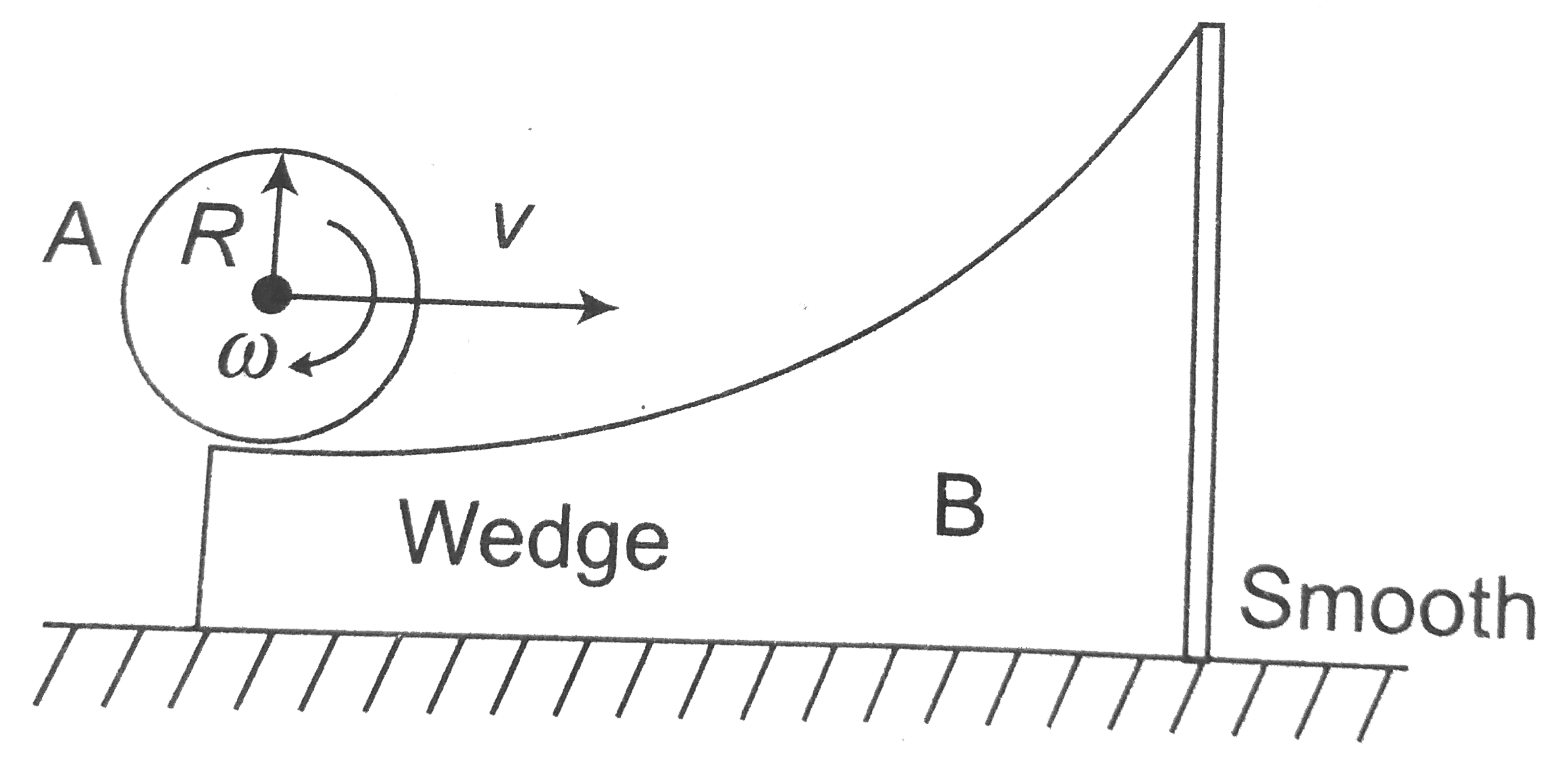 .Av2/4gBv2/gCv2/2gDv2/8
.Av2/4gBv2/gCv2/2gDv2/8As shown in the figure, a disc of mass m is rolling without slipping with angular velocity ω. When it crosses point B disc will be in
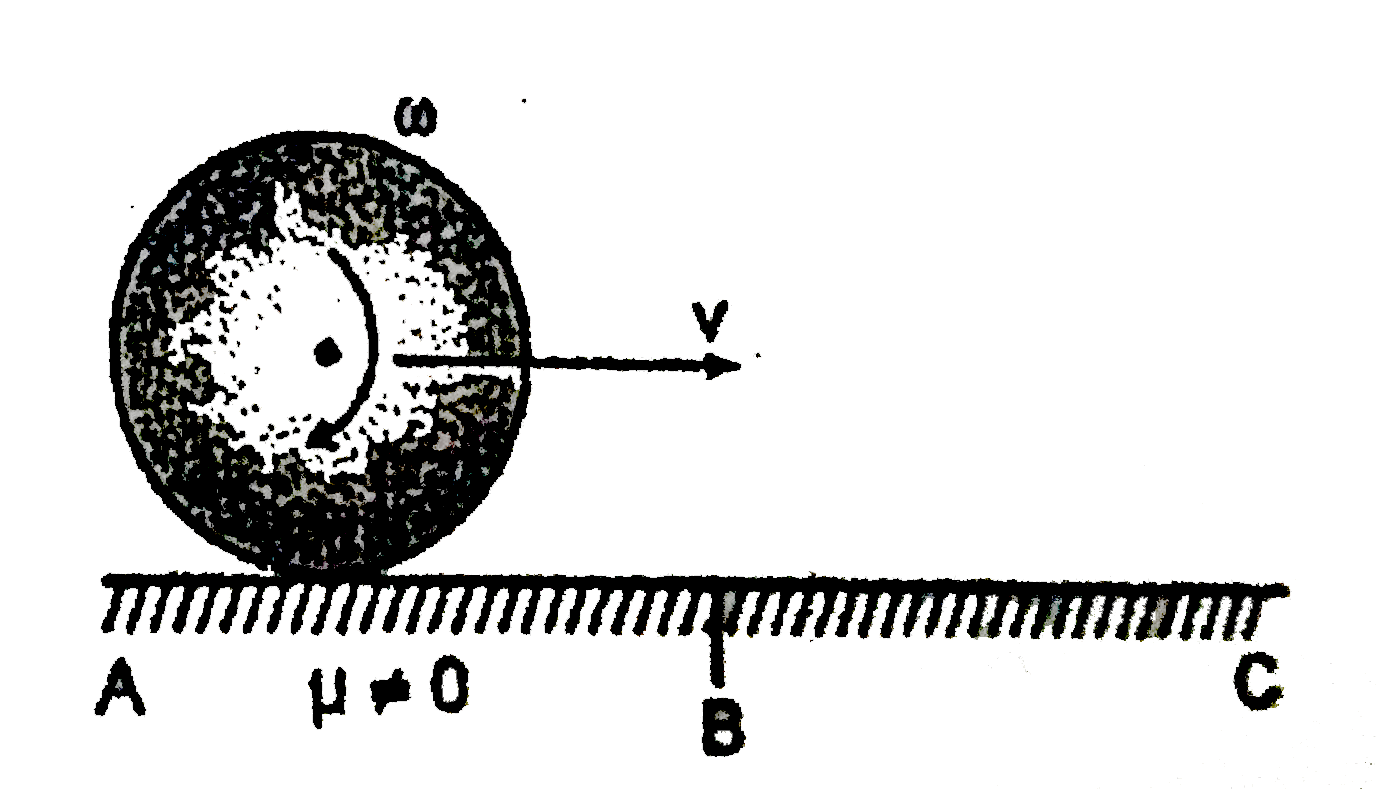 Atranslational motion onlyBpure rolling motionCrotational motion onlyDnone of these
Atranslational motion onlyBpure rolling motionCrotational motion onlyDnone of theseA uniform disc of mass m and radius r rolls without slipping along a horizontal surface and ramp, as shown above. The disk has an initial velocity of υ . What is the maximum height h to which the center of mass of the disc rises ?
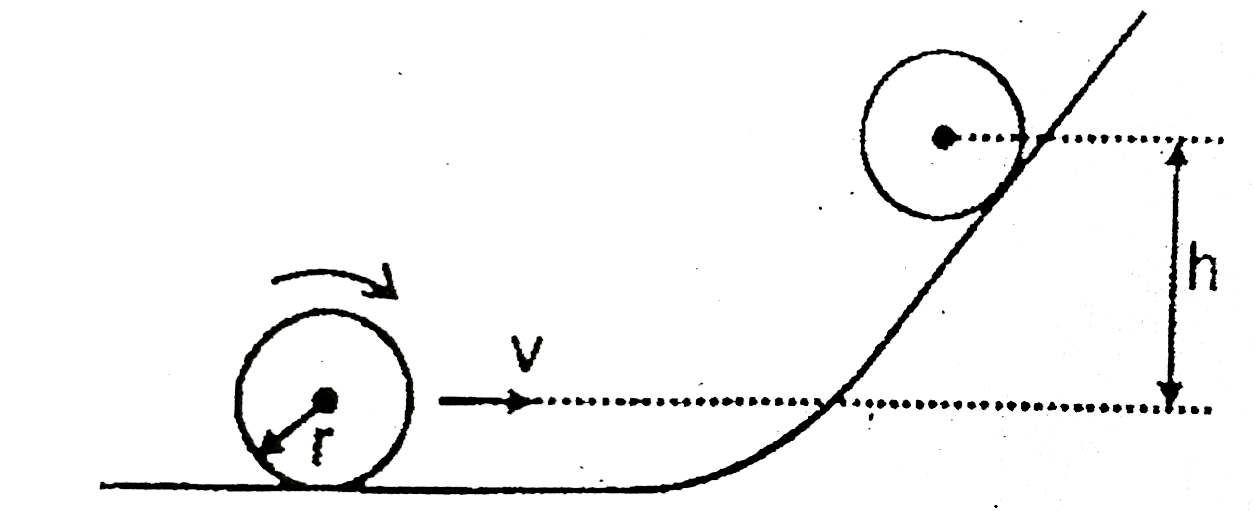 Ah=υ22gBh=3υ24gCh=υ2gDh=3υ22g
Ah=υ22gBh=3υ24gCh=υ2gDh=3υ22g
A body thrown up with a velocity reaches a maximum height of 100 m. Another body with double the mass thrown up with double the initial velocity will reach a maximum height of-
View SolutionA body, thrown upward with some velocity reaches the maximum height of 50m. Another body with double the mass thrown up with double the initial velocity will reach a maximum height of
View SolutionA body, thrown upwards with some velocity, reaches the maximum height of 20 m . Another body with double the mass thrown up, with double initial velocity will reach a maximum height of
View SolutionA body, thrown upward with some velocity reaches the maximum height of 50m. Another body with double the mass thrown up with double the initial velocity will reach a maximum height of
View Solution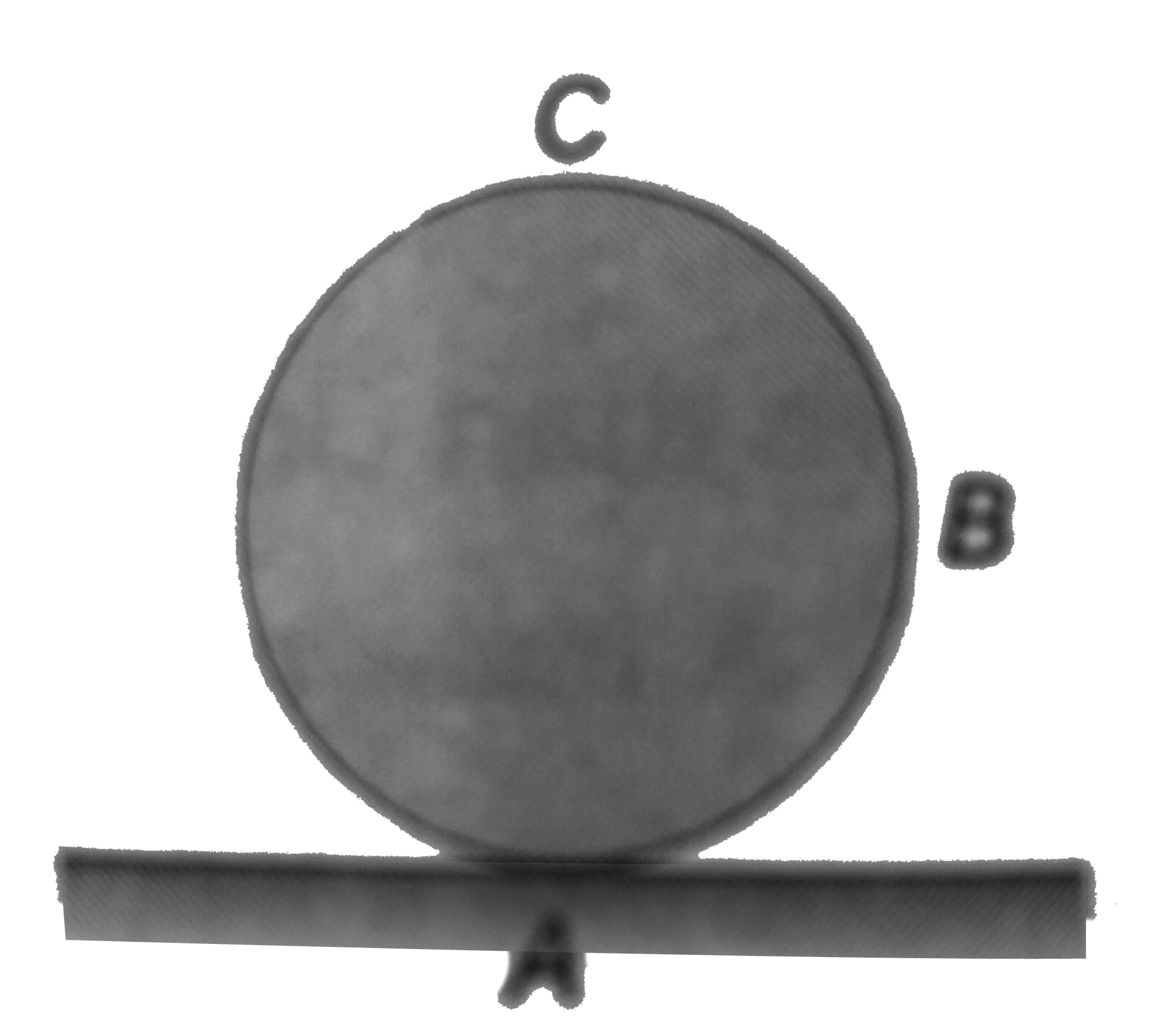
A wheel is rolling without slipping on a horizontal plane with velocity v and acceleration a of centre of mass as shown in figure. Acceleration at
View Solution

